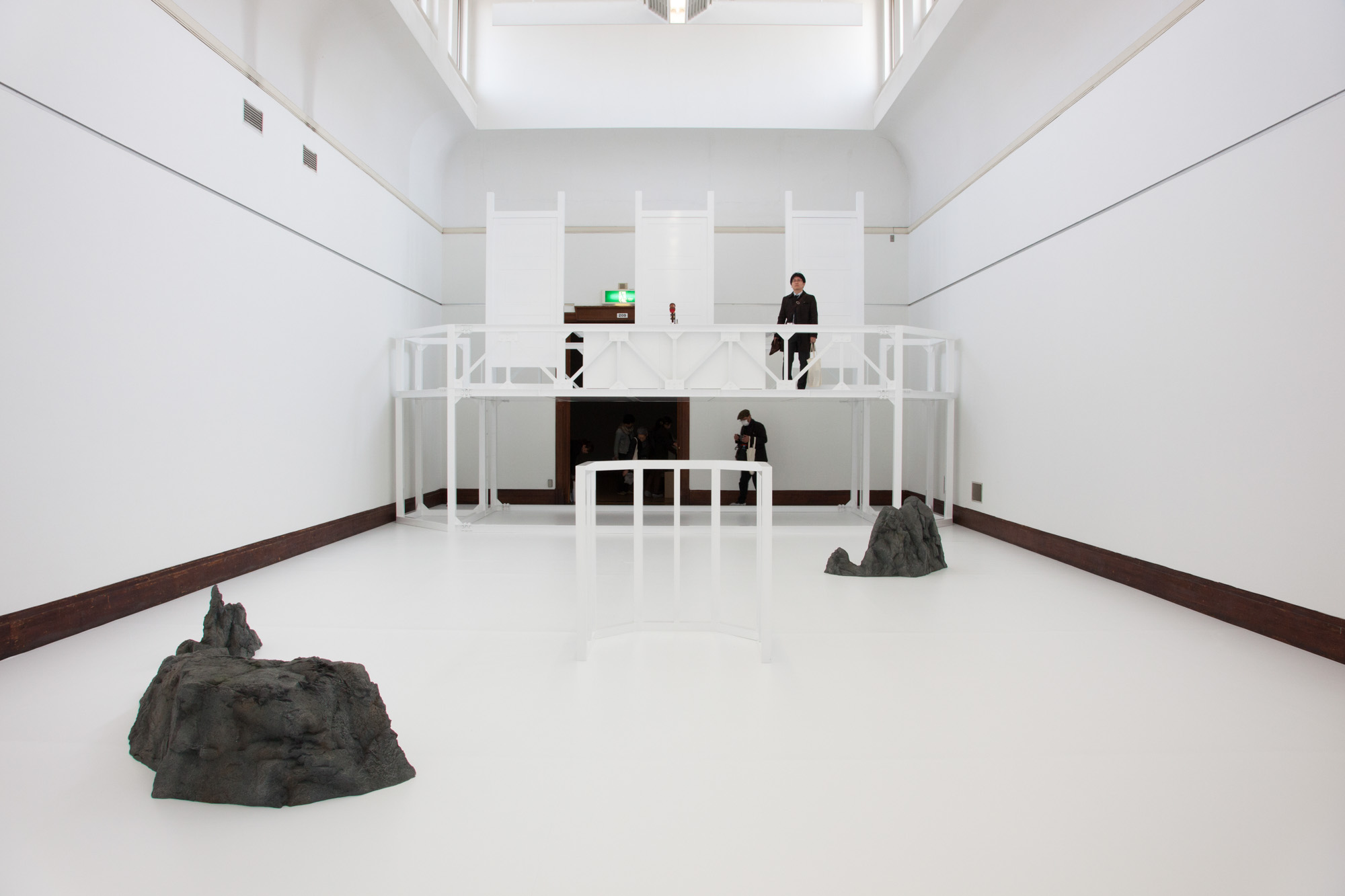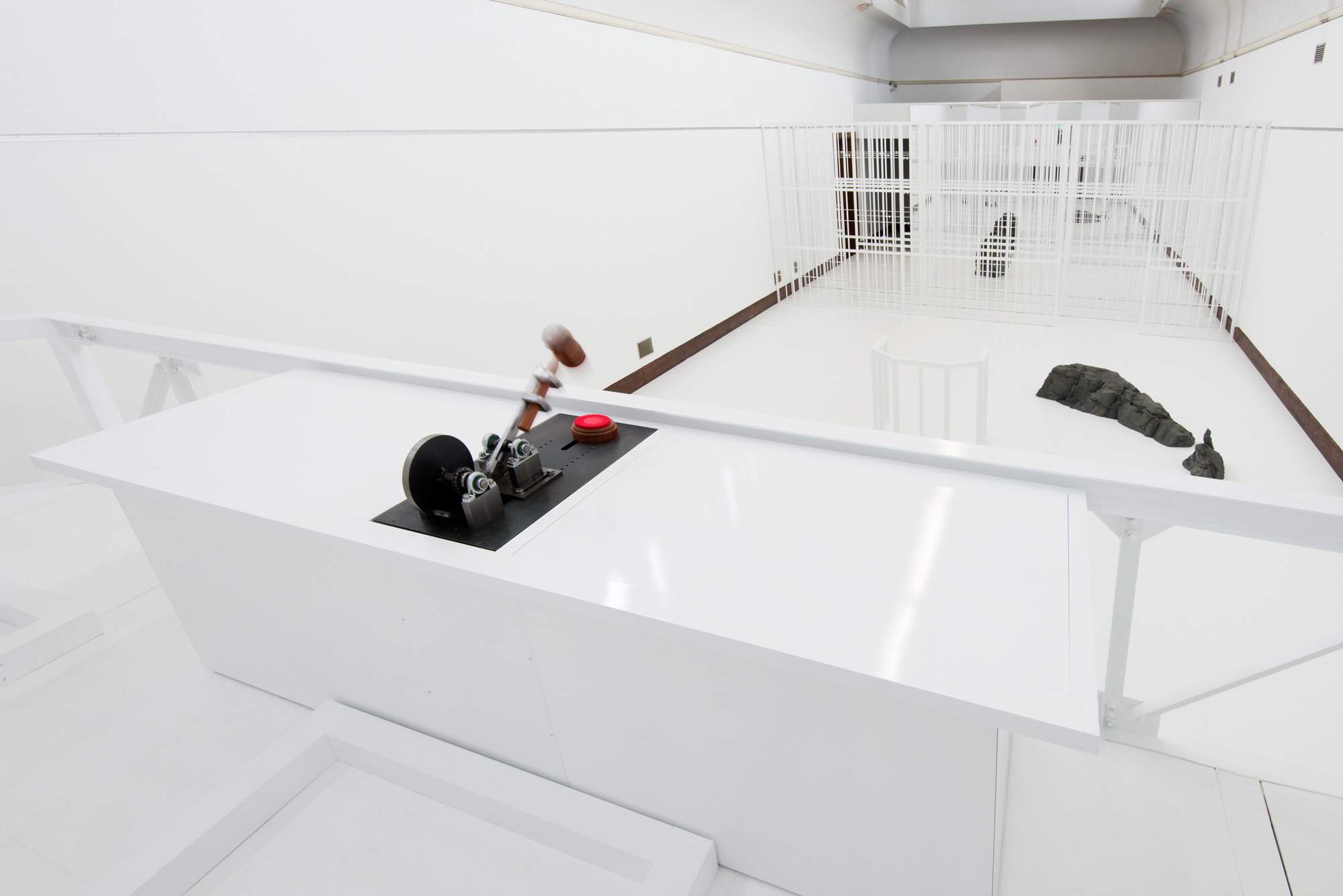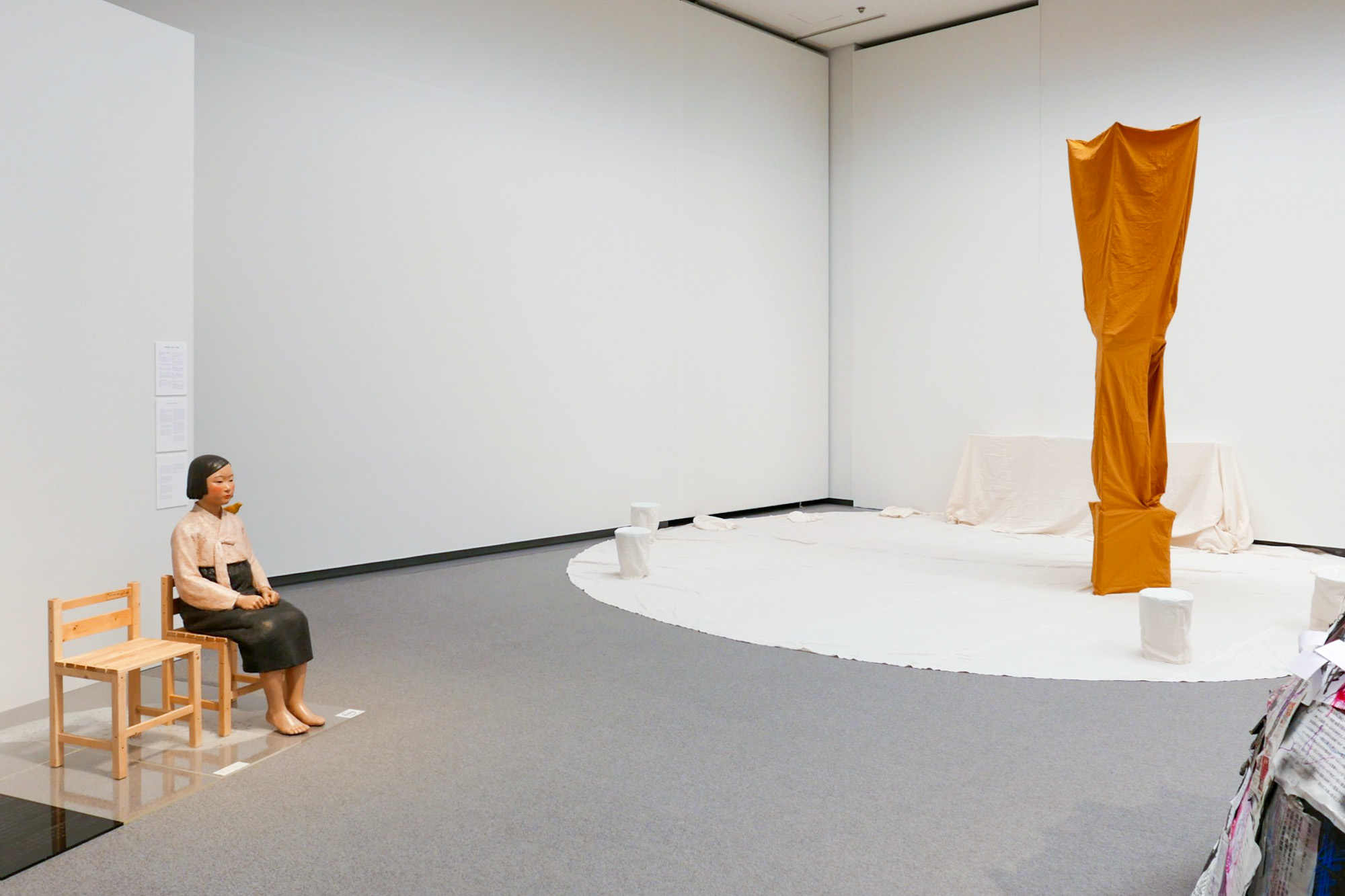Selective Amnesia: Questioning Japan’s Historical Revisionism through Art
By Tadasu Takahashi

Installation view of KEIKO KURACHI and SATORU TAKAHASHI


The historian EH Carr proposed that history is a “continuous process of interaction between the historian and his facts, an unending dialogue between the present and the past.” The necessity of thinking about how historical memory is shaped becomes clear in Japan’s current political climate, where historical revisionism is propelled alongside a nationalistic, rightward shift. The whitewashing of Japan’s wartime atrocities in history textbooks, prime ministerial visits to the controversial Yasukuni Shrine where Class-A war criminals are enshrined, and the silencing of criticism towards the government in the news media, are all actions that deny the relevance of the past to the present, diagnosing historical events as a bad memory to be forgotten. Challenging this top-down approach to erasure, several artists have created works that ask the audience to critically re-examine the boundaries of what they know as history.
Many topics in Japan are considered too taboo to overtly address. Defying those social norms is the installation Ornament and Crime: Sense/Common (2015) by Keiko Kurachi and Satoru Takahashi. The multipart work resembles a courtroom that has had its authority to make decisions bleached away into a white nothingness. In front of the judge’s bench, a stand for a witness to testify is positioned within an imitation of a stone garden; a mechanized arm pounds a gavel twice in continuous intervals. What is the person being called to testify about? By deliberately leaving the rock-forms in the garden open to interpretation—as either ornamental stones or miniature versions of islands—the artists make a suggestive reference to the territorial disputes surrounding the Diaoyu/Senkaku and Dokdo/Takeshima islands. While Japan and its regional neighbors each consider it common sense that the islands’ ownership should be theirs, the legacy of Japanese colonialism complicates the issue.

Installation view of KEIKO KURACHI and SATORU TAKAHASHI
This complexity is simulated through a maze in the back of the room made of prison bars. A large mirror is located on the other side, allowing the viewer to see their reflection as they navigate the maze. A solitary stone structure sits outside facing the mirror, representing the inflexibility of each nation’s understanding of common sense, in contrast to the fluidity of the viewer’s movements in the maze. The next section of the installation continues this line of questioning, with a video projection of a closed elementary school in Suujin, a district in Kyoto historically associated with a feudal class of outcasts known as buraku, stigmatized for having “impure” occupations. Descendants of buraku, like the school’s former students, are persistently discriminated against, revealing the concept of Japanese homogeneity to be a myth. Scattered in front of the video are copies of the blank ocean map from Lewis Carroll’s absurdist poem “The Hunting of the Snark” (1876), reinforcing the uncertainty of finding a truly common sense.

Installation view of (left) KIM SEO-KYUNG and KIM EUN-SUNG
This search for an elusive common sense was also illustrated in the controversy around the 2019 Aichi Triennale, specifically that over the Statue of Peace (2011) by Kim Seo-kyung and Kim Eun-sung. Displayed in a micro-exhibition titled “After ‘Freedom of Expression?,’” the statue served as an apt reminder of the unresolved “comfort women” issue, where appropriate reparations have not been made for Korean women who were forced to be sex slaves to Japanese soldiers during World War II. The way the Kims’ statue of the young girl sits with clenched fists and a stern look represents youthful perseverance. Underneath, a cracked white shadow in the shape of a hunched elderly woman speaks of the body’s frailty against time, and the empty seat next to the statue invites the viewer to join the cause in solidarity. Rightwing nationalists in Japan maintain that comfort women were professional prostitutes, and were angered by the Triennale’s display of “anti-Japanese propaganda” that claimed otherwise. The exhibit subsequently received a barrage of violent threats and was forced to close. It was later reopened, in its final week, with security measures in place. This controversy initiated a widespread discussion on free expression and censorship, but the Japanese government seemed indifferent to the attacks. Chief Cabinet Secretary Yoshihide Suga stated these threats were wrong, “generally speaking,” leaving room for the idea that certain threats were in some cases acceptable.

MAKOTO AIDA, _The video of a man calling himself Japan
A similar exhibition in Vienna titled “Japan Unlimited” (2019) featured artworks by Japanese artists that were critical of the government, and it soon lost its endorsement from the Japanese Embassy because it “did not match the conditions needed to promote friendly relations.” Among the works displayed was Makoto Aida’s controversial The video of a man calling himself Japan’s Prime Minister making a speech at an international assembly (2014), in which the artist dresses up as the current prime minister, Shinzo Abe, and makes a speech in halting English. He promotes the widespread implementation of sakoku, an Edo-period isolationist policy, as a way to mitigate the harmful influences of globalization. Although he apologizes to the countries Japan colonized, he simultaneously points the blame at other “powerful nations,” claiming that Japan was simply imitating their actions at the time. Eventually, his anger at having to speak in English reaches a boiling point, and he abruptly switches to Japanese before the screen breaks and goes black. Parodying Abe in this way reflects his nationalistic attitude towards history as an entity that can be severed, revised, and put aside. Abe’s 2012 campaign to “take back Japan” and “escape the postwar regime” parallels both the sakoku policy advocated in the video, and his anger at having to apologize for the wrongdoings of the Japanese empire in English. Overall, the performance further illustrates Abe’s intention to reframe Japan’s colonial history in a less apologetic tone, while also asking the viewer to consider the importance of political leadership.
The past informs the present, and history is the way in which it does so. While possessing historical knowledge of one’s own nation might seem like common sense, these artworks remind us to remain skeptical of what is considered “common,” especially in Japan where the government makes little effort to confront its colonial history. Many artistic endeavors to address these denials have been met with accusations of being “anti-Japan,” but they nevertheless provide important platforms for interaction and dialogue—a necessary countermeasure to Japan’s current revisionist tendencies.
Tadasu Takahashi is the third-place winner of ArtAsiaPacific’s 2020 Young Writers Contest.
To read more of ArtAsiaPacific’s articles, visit our Digital Library.








